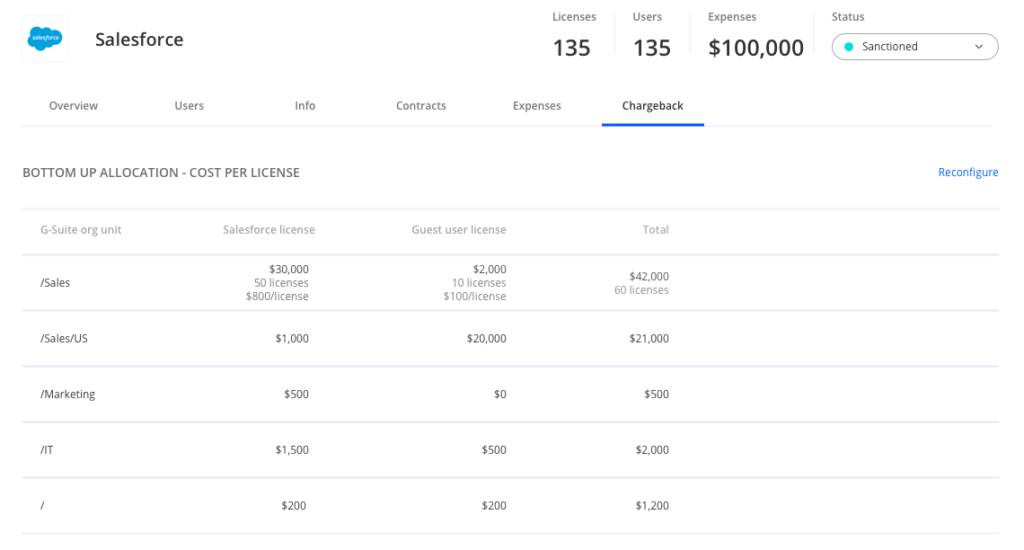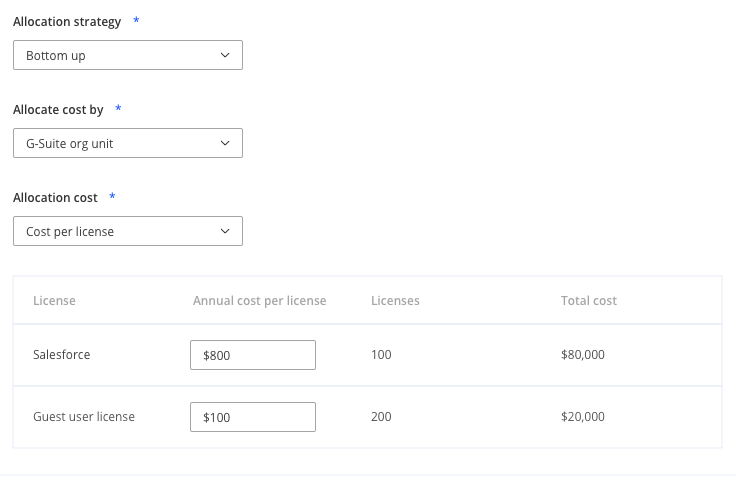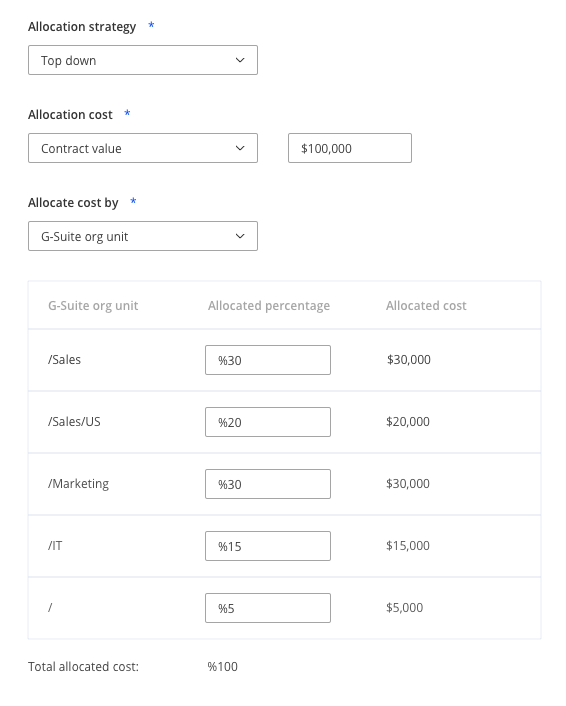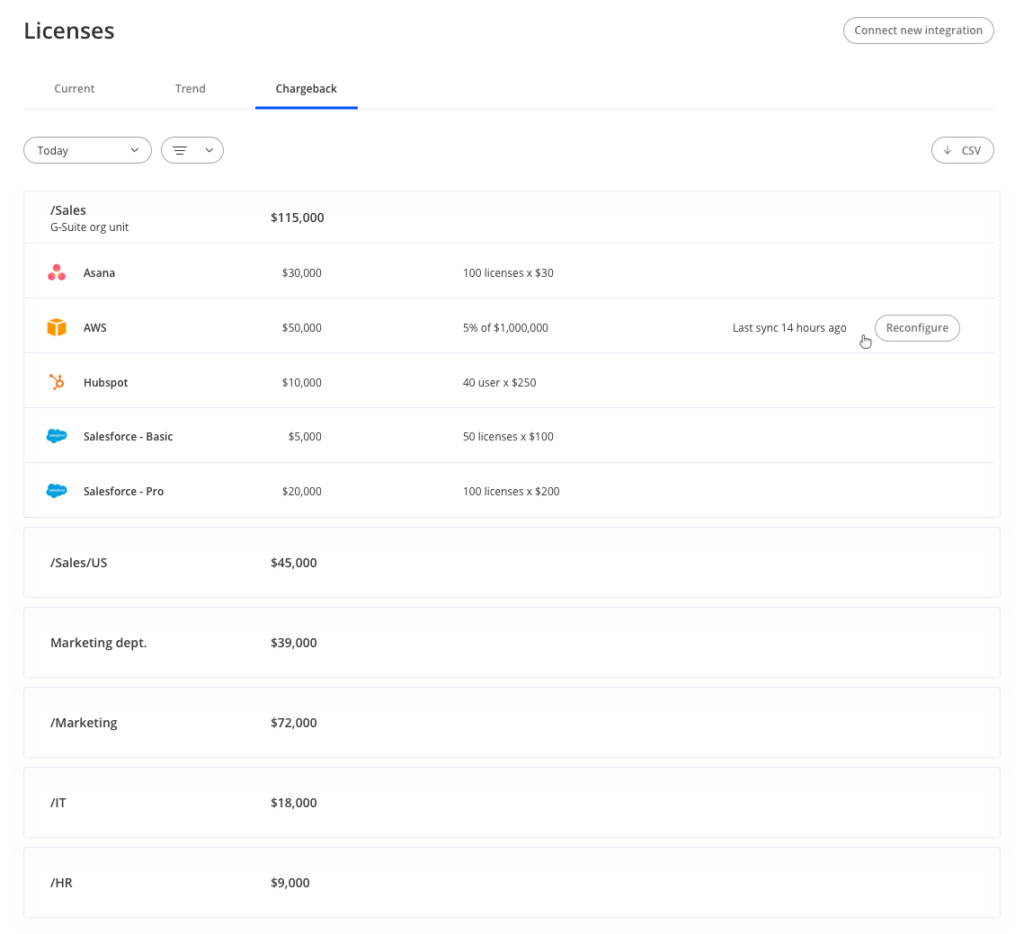IT chargeback is a strategy used by organizations to allocate the cost of IT services, hardware, or software to the business units that consume them. You can think of it like an internal economic model that IT can use to hold groups accountable for their technology resource usage. These costs are then “charged back” to these business units, often as line items in their budgets.
A showback is similar in that it tracks the costs. However, the difference between a chargeback vs. a showback is in the expectation of “repayment.” A showback is designed to make departments aware but without the requirement of budget impact.
Both systems are an important way to centralize spend visibility for the enterprise. However, implementation has always been a challenge due to the highly manual process required to create the chargeback and the difficulty inherent in ensuring accurate reports.

Why Use a Showback or Chargeback Model?
The proliferation of SaaS tools has created new challenges for IT. One of these is how to keep control of all SaaS costs.
In many cases, IT owns and pays for a SaaS tool that is used by many other departments. In other cases, one department buys a core tool that is also used by other departments. Since the departments and business units have no visibility into the cost, it doesn’t create the required cost accountability for the use of the tools, making it seem as though they are free resources.
For example, the company has decided to use Box as its file-sharing solution. This service is bought and budgeted for by the IT department, while all the company employees use the service.
Another example is the use of CRM software. The Sales department uses and pays for Salesforce, its CRM solution. Then the customer support and marketing department decides to use Salesforce as well. Who owns the Salesforce budget now? Should the Sales department pay for the Salesforce seats of other departments?
This is where IT chargeback finds its place. With IT chargeback reports, you get an accurate view of how much each department should be charged for their IT resource consumption. The visibility offered by the chargeback reports creates accountability for the costs of the services. The result is that departments will ensure that all services are utilized properly, reducing the amount of wasted and underutilized licenses and the removal of unnecessary duplicate tools.

Challenges to Implement IT Chargeback Methods
There are three main challenges when trying to implement IT chargebacks:
- Gathering Data
- Ensuring Accurate Data
- Selecting an Effective Chargeback Strategy
Gathering Data
The first challenge most IT teams face is how to gather the data. IT already struggles to understand who uses which tool and to which department or business units they belong. Things are also complicated by the introduction of shadow IT applications with overlapping and redundant capabilities. Trying to create an up-to-date chargeback report often fails as the return on investment for creating such a report doesn’t seem to be worth it.
And this complexity will only get worse. According to Gartner, “Through 2027, organizations that fail to attain centralized visibility and coordinate SaaS life cycles will overspend on SaaS by at least 25% due to incorrect and unnecessary entitlements and not rationalizing overlapping tools and instances.”
[Download the latest Gartner Market Guide for SaaS Management Platforms]
Unless IT uses a SaaS Management Platform, gathering the data for chargeback is a long and manual process that hinders many companies from using the chargeback process.
Ensuring Accurate Data
As the data from the chargeback is used to ensure visibility of the cost associated with each department or business unit, this process may result in internal pushback from various stakeholders. If the data created is not accurate, this alone will make the whole process obsolete and will fail due to a lack of trust from other parties.
Selecting an Effective Chargeback Strategy
Different tools may require different allocation strategies. Different chargeback strategies should be used with different tools.
Here are the most common strategies we’ve seen our customers use:
- Bottom-up (cost per license) – The recommended strategy to apply where different costs apply to different license types
- Bottom-up (cost per user) – The recommended strategy to apply where you pay per user regardless of their license type
- Top-down: The recommended strategy for apps that are not charged per seat (e.g. Cloud Computing, Firewalls, Network Infrastructure) where you allocate cost to business units by percentage. Use this strategy for applications that are not charged by the seat.

IT Chargeback with Torii
With Torii, implementing a chargeback process has never been easier as Torii solves all three challenges with ease.
- Automatic Data Gathering: Torii automatically pulls all the license and user data from your SaaS applications, keeping them up to date at all times. Torii also creates a reconciled user and license inventory, pulling together license information alongside user departments and business units.
- Data Accuracy: With over 100 direct integrations, Torii can fetch license information directly from the SaaS tools giving you the most accurate and reliable data you can have.
- Chargeback Strategy Configuration: Torii offers you a choice of the right chargeback strategy per application, giving you full flexibility and control over your created reports.

Conclusion
IT Chargeback is a proven process creating accountability for software costs across the different departments and business units. While many companies refrain from implementing chargeback due to the complexity and the effort required to create chargeback reports, with Torii, it comes down to the click of a button.

